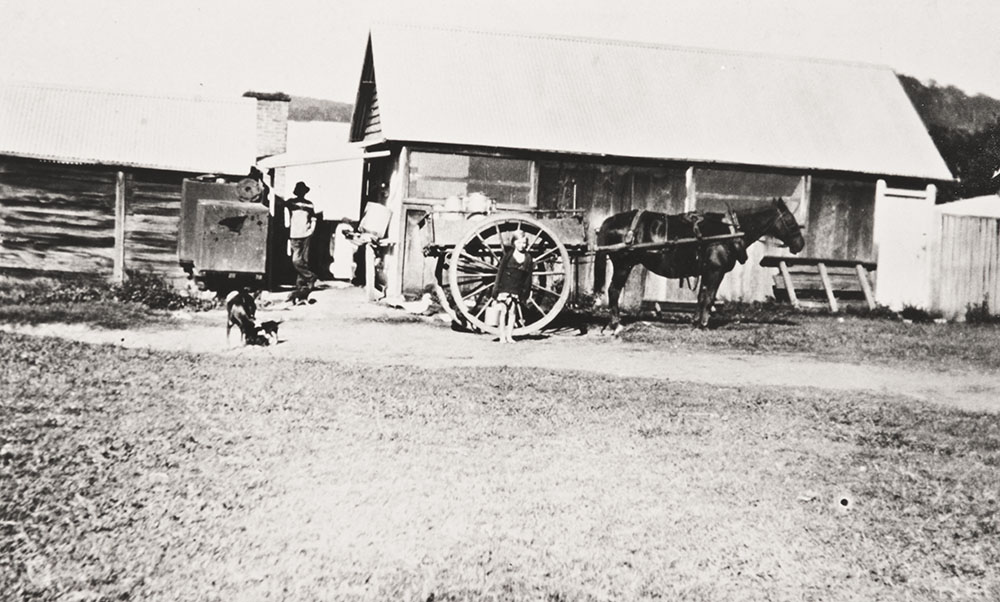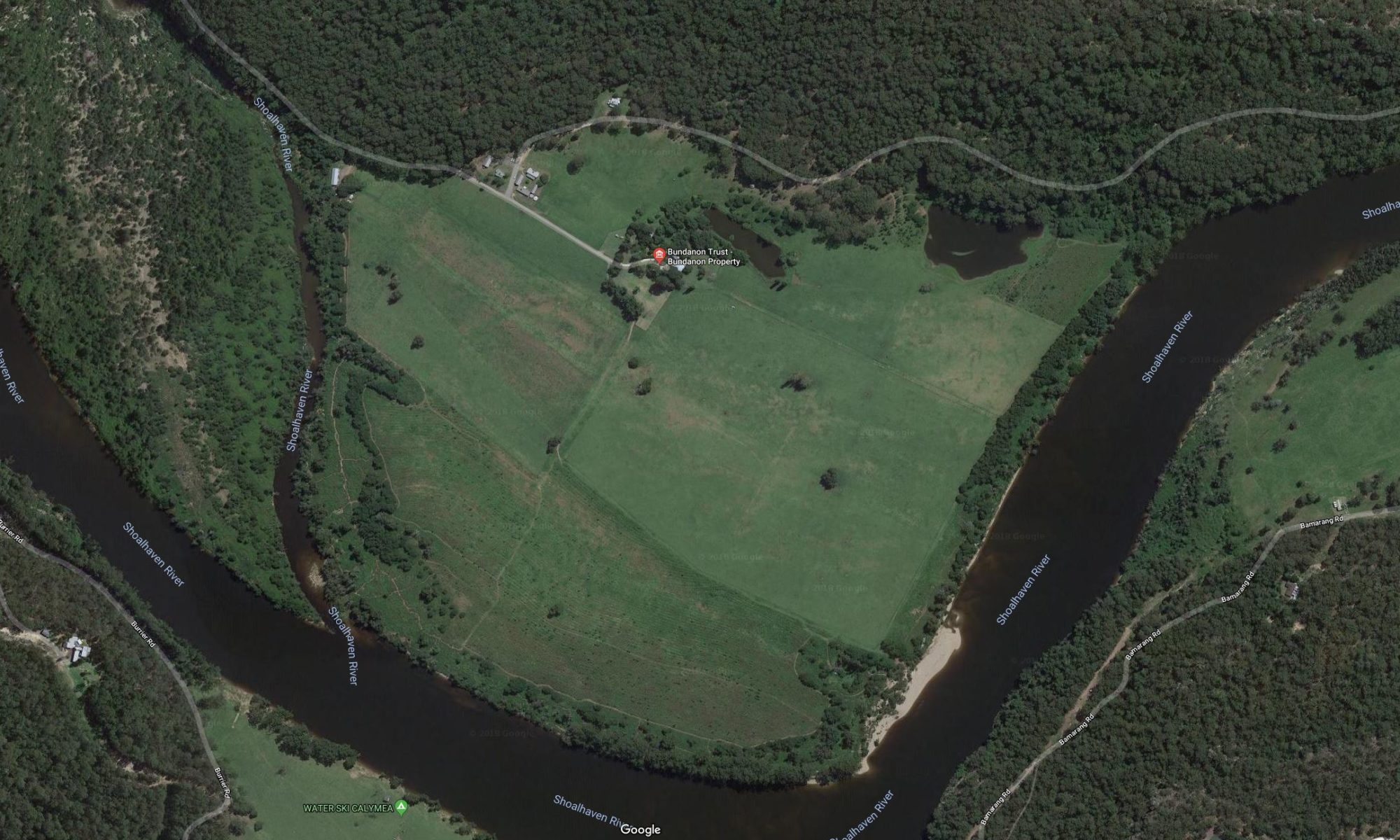European occupation brought a radical transformation of the landscape, through tree-felling and then clearing for agriculture. Cedar-cutters felled valuable red cedar trees (cedar was reportedly Australia’s first export) from 1811; in 1812 there were nine ships transporting cedar back to Sydney. The clearing of the forest removed the site of traditional Indigenous life, and opened the land for agriculture. 600 acres of land were sold to R. H. Browne in 1832, on the condition that ‘55 acres were to be cleared and cultivated and fences erected.’ This and other adjoining properties were bought by Dr Kenneth McKenzie in 1838; the McKenzie family endured severe periodic flooding of the Shoalhaven River to establish their farm and farm buildings. The destructive flood of 1860, which wiped away buildings along the river, prompted McKenzie’s building in 1866 of the two-storey homestead, built of sandstone and local cedar, along Georgian lines and on high ground: this house today is open to the public as the former house of Arthur Boyd.
The McKenzie agricultural estate of Bundanon focused on dairy farming and maize crops; access to Nowra was by river ferry. Other farmers cleared and cultivated land in adjoining areas, among them the Biddulph brothers, who owned Earie Park. The Biddulph diaries are used as a source by Nigel Helyer in his work Milk and Honey (2012); these diaries display a farmer’s sensitivity to the weather, the productivity of the land, and a watchful eye on the river (there were disastrous floods in 1870, 1891 and 1898). By the early twentieth century, the Bundanon homestead was the central building of a working farm that included stables, a curing shed, orchard, vegetable garden, pigpens, dairy, beehives, as well as workers’ huts.

